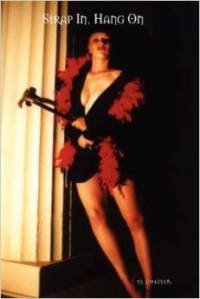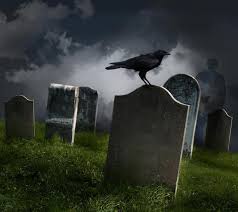
T.L. Chester is a highly creative individual with an exceptionally original and captivating style in both her literary and photographic endeavors. I found To Penetrate one of the most intriguing and suspenseful books I’ve ever read. Her first published work, a book of poetry, entitled “Strap In, Hang On,” is an apropos description of what it was like to read her novel, a warning of sorts which certainly reflects upon an amazing and interesting author who bears watching.
MF: Your first published work of poetry, “Strap In, Hang On,” obtained some excellent critical reviews and then spawned a rather lengthy and lively discussion amongst the reviewers, many comments of which were deleted by Amazon. What was your take on all the fuss?
TC: This was my first publication, and the expression itself was more for the love of it, and I can only hope readers sincerely enjoyed it. Grady Harp is notorious for Amazon reviews and has been slated to determine the fate of future authors. In my case, the review was very critical, such that his fans didn’t appreciate it, and I greatly appreciated their support, it became a controversial matter on Harp’s turf.
MF: It appears that your poetry was an outlet for painful experiences and events in your life, much of which was quite personal. What motivated you to share that with the world?
TC: We all have these things we must overcome over long term, and event inspired. It was an accumulation of all those events that the only justified thing to do was a creative outlet. We are all going through something; we are all experiencing this rollercoaster. It was therapeutic in nature, and turned into sharing. Sharing these thoughts in community speaking events, online through blogs and various outlets created a demand and that’s how the first book was born.
MF: Your novel, “To Penetrate,” is described as “a deeply chilling tale of psychosomatic secrecy and unveiling, “and a psychological thriller suitable for the “instinctual reader who appreciates nonlinear stories.” I found it yanked me in and didn’t let me go until the last, incredible page. How did you come up with the idea for this story?
TC: My thought process is certainly fragmented, but I thoroughly enjoy organizing processes. Though I had done various works with short stories for publications, I had never created a book like this. My thoughts for this book came through various concepts, a song might have inspired a chapter, a symbol had relevancy to the characters, so I kept notes, what inspired this and what I planned to do with it. The story was just somehow always there. After noting all these concepts over time, the book wrote itself, it was the transitional pieces that took time; this very much explains why there are so many eggs.
MF: What is your favorite part about the creative process?
TC: Purging is my favorite part of the creative process. I’d be lying if I said there was no part of me in what I write. It’s a creative expression of what it might be like to be in someone else’s shoes, feeling life in a manner that I may not understand, or see things from a perspective I don’t currently know. Getting a peep of the world in a way that I may not yet comprehend gives me a truly deep appreciation for what I have been through in life, and some faith that we are all connected. Capturing that, making note of it and putting it back out in various works is the only thing that gives this meaning for me.
MF: What are you working on currently and when do you plan to have it released?
TC: I am working on a precursor for To Penetrate. This book is not as subtle in story, I am aware that To Penetrate in comparison is methodical and sometimes gory, but slight in giving clues for those who love to pick up the pieces. Other works currently include a complete biography that I am currently ruminating on, and a philosophy book.
MF: Can you tell us a little bit about it so we know what to look forward to? Will it be similar to “To Penetrate” or entirely different?
TC: The next book is a precursor to a series of events in To Penetrate & can be a lot to take in; it’s probably comparative to the movie Se7en in terms of being in your face and has explicit adult content. The biography is another work that is personally significant. My philosophy book is to shed light and criticism on current affairs and hopefully will create conversation around dogma.
MF: You also have two photography books out, “Miscellany,” and ”Idiosynkrasia,” which provide another dimension of your talents. Was there anything in particular that inspired them?
TC: I had begun writing as a result of my involvement in various events that created a demand, after publishing and my works started to receive reviews, I would then get requests to be the critic, or participate in entertainment pieces, political satire, and the like. I have always had a natural interest in photography, and it’s just too easy if you are as inclined with technology as it stands. Needless to say as I had participated in entertainment journalism I would naturally take pictures, sparing my stint in photojournalism that turned into more publications over time.
MF: Can we expect any more photography books in the future?
TC: I may be inspired as I developed more as a photographer and would like to do so; currently I am producing material for brochures, calendars, contributing pieces for entertainment publications and so forth.
MF: How would you describe the synergy between your writing and photography?
TC: These are such incredible questions. My photography, at its best captures a feeling that can’t be described, but we all can feel just in observing, “that moment”. I hope my writing, captures what we can’t see and need the picture painted.
MF: What else do you enjoy doing besides photography and writing, as if that isn’t enough! Any other creative endeavors or outlets?
TC: I promise I am not an adrenaline junkie, I am not. I do find that I need inspiration. I have always enjoyed exploring. Currently I enjoy flying lessons; I also have begun diving, as well as a variety of dancing sessions. I am a foodie, and like to try new restaurants. I am fortunate in that people in the community know me, and I am called upon to participate in writing or photography of events and that gives me a lot of exposure, maybe more than I care for at times. I very much enjoy the heavens, astronomy, astrology, and the like. If you ever have to wonder about my writing, and are in the know, my Pluto is in the 5th house, & Mars Conjunct Jupiter are an aspect in my chart, and if you’re not, there’s always Google.
BOOK LINKS

To Penetrate: http://www.barnesandnoble.com/w/to-penetrate-tl-chester/1111341865?ean=9781105692048

Strap In, Hang on: http://www.barnesandnoble.com/w/strap-in-hang-on-t-l-chester/1015235916?ean=9781435700871

Miscellany: http://www.amazon.com/Miscellany-Tl-Chester/dp/0557058090

Idiosynkrasia: http://www.amazon.com/Idiosynkrasia-TL-Chester/dp/0557038715
SOCIAL MEDIA LINKS
Website: http://tracylchester.wix.com/tlchester#!__bio
Facebook: https://www.facebook.com/pages/TLChester/294383153916470
Goodreads: http://www.goodreads.com/author/list/4289805.T_L_Chester
Blog: http://journalistauthortlchester.wordpress.com/2014/07/17/sensual-jams/
Twitter: https://twitter.com/tracy_chester
PRESS RELEASES
Strap In, Hang On: http://www.prleap.com/pr/98273/
To Penetrate: http://www.prleap.com/pr/186187/























